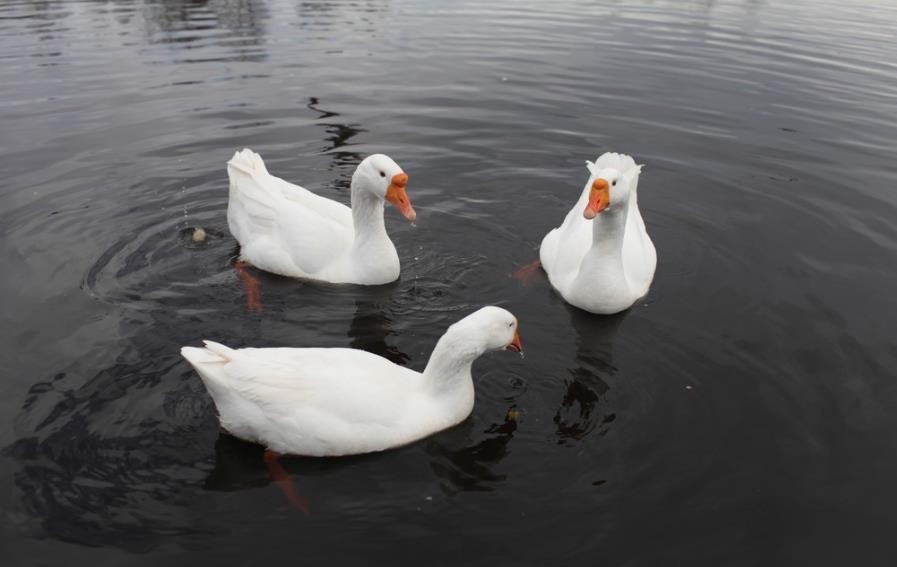
- Online pavilions:
- Veterinary medicines
- Veterinary raw materials
- Other
- Asia
- America
- medical instruments

News briefing: egg duck
Entering the winter season is characterized by seasonal changes, the focus is to cope with changes in temperature, the lowest winter temperature can be a few degrees below zero, in 1-15 degrees time will be more than 2 months, therefore, in such a temperature environment, where would our counterpart be?
ADJUSTMENT OF GROUP STATUS CLASSIFICATION:
After the arrival of winter, many ducks in this process will have changes in the body function, for the weaker ducks, especially the old ducks, will be gradually moved down, so, according to different body conditions and age ducks to adjust groups, the old, the weak, the sick, the disabled duck, the low production duck and the stopped production duck should be eliminated in time; the sub-weak ducks and the ducks with certain production uses should be given special care to raise, so as to keep the ducks with high production performance and the ducks with low production performance, so as to improve the breeding efficiency; Leaving the laying ducks with good production performance, strong physique and normal egg production, this group will not waste on breeding costs, and can continue to raise; the laying ducks are in the off-season, we can choose to eliminate or artificial technical molting, breeding for a period of time to continue to do egg production use, molting technology we in the post-technical article in detail;
2. Keep warm:
1, Duckling Insulation: Duckling Insulation is the most important first week to the fourth week, this stage of temperature must meet the temperature standards, insulation problems, this process may not be successful, after the breeding will be impossible to say; The temperature of raising ducklings should be 33-34 °C in the first week, 31-32 °C in the second week, 29-32 °C in the third week and 25-28 °C in the fourth week. After four weeks, the ducklings should be released gradually to adapt to the outside temperature
2. The optimum temperature for laying duck was 16 ~ 20 °C, too low or too high temperature could cause egg production to drop. Therefore, keeping the environment temperature of the duck house relatively stable is the key to the high and stable production of the duck in winter. When it is too cold, the time of outdoor activities can be reduced as much as possible, but the density of the duck in the duck house should be noted, too dense air circulation and humidity will be affected, and affect the egg production. Here are some ways to keep warm and warm:
1.Hang things such as grass curtains, tarpaulins and clinker tarpaulins outside the doors and windows. During the day, when the temperature is higher at noon, some tarpaulins can be properly pushed aside to allow air to escape, cover or plug up any leaks.
2 laying duck house can be bedding, dry and clean straw, wheat Straw, thickness in 20-30 cm, bedding to change frequently, good sunshine every 3 days can be changed, the house will be changed out of the air, and update rotation;
3 the feeding density is suitable, general winter each square meter 7 can be 9 only, the density is too big the duck dozen dozen dozen squeezes the air to circulate not well, easy to cause the respiratory system disease, the density is too small if the artificial heat preservation is not good, will produce the body temperature to lose, easy to catch a cold, if the density is right, the temperature of the ducks can be used to increase the shed temperature.
4 The duck house should be heated properly when the severe cold comes. There are many ways to heat the duck house, such as using infrared light, a 250w infrared heat preservation light every 3-4 meters, pay attention to the tolerance of the electric wire of the heat preservation light, and consult an electrician, do not use the general domestic power cord, bulb power over cause a fire, to check at night, infrared light from the ground height is 60-100 cm away from the duck.
3. Disease Prevention:
In winter, because the temperature difference is too large, coupled with the temperature change, the duck’s body’s function is almost under the stress state, the organism’s resistance is relatively low, after many kinds of pathogenic factors invade, it will cause a series of diseases to appear, therefore, we should prevent from the following aspects:
1, Immunization: Ducks come back from the shell, we must do a good job of immunization, mainly to prevent ducks hepatitis, duck serositis, duck plague, fowl cholera immunity, these vaccines are sold on the market, but in strict accordance with immune procedures and immune operations to achieve better results;
2, Duck Drug Prevention: Duck drug prevention is also very important, the general bacterial disease we can prevent in advance can achieve good results. In the first week, the second week and the third week, the drug prevention was the most important. At this stage, the ducks had a lower body weight and a lower age, and the cost of using the drug was the lowest, on the other hand, it is the loss of the duck and the influence of the production performance in the later period
3, DRUG PREVENTION TARGETED DISEASES: the first week to prevent duck hepatitis, salmonellosis, colibacillosis, cold, the second week to prevent the key cold, serositis, duck plague, coccidia, ESCHERICHIA coli, Salmonella; In the third week, it can prevent cold, serositis, duck plague, escherichia coli, Salmonella, Mycoplasma; the medicine can be used in combination with Chinese and Western medicine;
4. The same is true for Spring Disease Prevention in large and medium-sized ducks. The first step is to vaccinate the corresponding diseases according to the immunization procedure, which is the most effective measure for disease prevention. The second step is to use the corresponding seasonal drugs once a month for disease prevention and control.